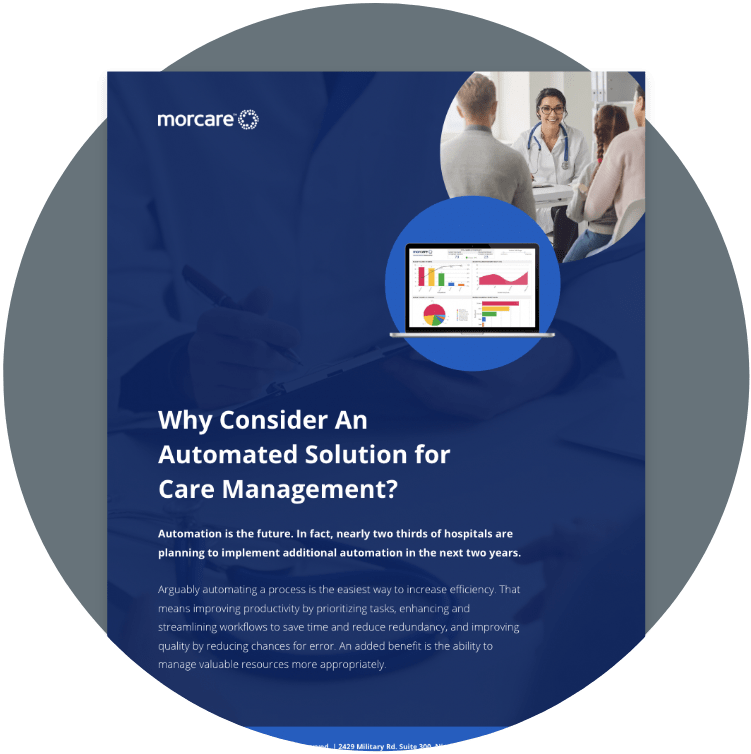The Hospital discharge process is an essential part of the care continuum, but without the right infrastructure, it can be a cumbersome and chaotic process. Administrators in healthcare organizations need to be actively engaged if they want to ensure that the hospital discharge process is both efficient and effective for all involved.
Establishing clear goals and objectives around patient experience is paramount for any successful strategy aimed at improving your hospital’s discharge processes. Whether you’re looking at how safe discharge policies can improve recovery times or exploring new technologies that streamline operations, there are countless ways to optimize your approach so that everyone benefits from a seamless transition.
Today, we’re going to cover some key strategies that you can implement at your own hospital to optimize the discharge process. First, let’s start with some pillars of an efficient patient discharge.
How to Efficiently Discharge Patients
1: Conduct a Planning Assessment
Discharge planning is an essential part of patient care, as it ensures that the transition from hospital to home is safe and smooth. As part of the discharge planning assessment, hospital discharge planners should ask questions about the patient’s living situation, financial resources, and support system.
The assessment should also consider the availability of follow-up care, psychosocial needs, and safety risks. In addition, you may need to assess the patient’s cognitive abilities and provide referrals for home help or social services if needed.
If an adult patient is unable to make medical decisions for themselves, include their legal guardian or caretaker in these assessments. These individuals could provide additional context to help your staff provide more accurate post-discharge recommendations and set proper expectations.
2: Educate the Patient On Any Post-Discharge Treatment Requirements
Take an integrated approach to educating patients on any post-discharge treatment requirements. This includes reviewing any care plans and scheduled follow-up visits with the patient, as well as providing clear, concise instructions on how to manage the care needs at home following discharge.
In preparation for discharge, provide patients with important contact information in the event of additional health concerns or if any further clarifications are needed regarding care management. For example, provide your patients with your direct email and phone extension so that they can reach you without being placed on a long hold.
Finally, provide patients with written instructions and any further helpful information that could assist them in their post-discharge phase. These references can help to answer any common questions and offer guidance for predictable scenarios that may occur.
3: Coordinate with Staff to Assist in Discharge Planning
Whether the patient is returning home or transitioning to a post-acute care facility, coordinating with both internal and external staff can ensure a more efficient discharge process. Discuss with your internal team what information will be needed before discharge can begin.
For patients who are returning home, ask them to consent to share their medical information with their primary care provider. This will facilitate the transition of care post-discharge, as their regular doctor will have access to all records of the care received during their stay at your facility.
If your patient is transitioning to a post-acute care organization after leaving the hospital, connect with the staff who will be providing care. Share any pertinent information that could help the post acute provider deliver appropriate care and ensure a more successful recovery.
4: Follow Up with Patients Shortly After Discharge
Following up with patients after discharge from the hospital is incredibly important. This enables you to be sure that the patient has everything needed for a successful recovery. It is generally advisable to follow up with patients as soon as possible, ideally within 24 hours of discharge.
During this follow-up, questions that help gain insight into how the patient is feeling should be asked. This may include queries on how they are managing pain and any other symptoms, whether or not they understand what activities or habits should be avoided during recovery, if they have enough support available, and if all medications were prescribed correctly.
5: Document Everything in a Centralized Location
Maintain all patient data in a centralized hub that you, your staff, and any external post-acute provider can access to ensure a greater transition of care. Using a discharge placement portal or similar system can house all of this important information in a secure, HIPAA compliant space that provides efficient access to necessary information.
6: Plan for Likely Readmission Cases
While reducing readmissions is a goal shared by most healthcare organizations, these instances cannot be avoided entirely. If a patient’s condition indicates a high likelihood for readmission, create a proactive action plan in the event that they return in the near future. Your staff will already have access to documentation outlining the proper protocol and procedures so that they can accommodate the returning patient effectively.
Discharging to Post-Acute Care vs. Full Release
If post-acute care providers will be responsible for managing the aftercare of your patient, provide clear instructions and identify communication channels. This communication should include ongoing feedback on condition and progress to ensure proper follow-up treatment.
When releasing a patient with no followup care, it is important to provide them with tools and resources so they are prepared for life outside of the hospital setting. Ensure that the patient understands any prescriptions, medications or treatments required for maintaining their health, as well as being mindful of any engaging activities or events recommended by healthcare professionals in order to stay connected with their community.
Minimizing Risk of Readmissions
Minimizing patient readmissions is a key concern for doctors and hospitals alike. It is important to understand why they occur in the first place so that corrective measures can be taken to reduce the risk of rehospitalization.
With this in mind, it is critical to monitor patients regularly post discharge, and intervene if necessary—keeping tabs on vital signs, symptoms, and health history will play major roles in reducing the likelihood of readmission.
It is important to encourage patients to continue to follow their prescribed course of treatment after leaving the hospital. Frequently monitoring them temporarily from home will help facilitate this goal.
Finally, making sure that patients have all of their questions answered prior to discharge will allow them to move forward with greater confidence, knowing what action should be taken both medically and otherwise if problems arise following their release.
A common thread seen here is that communication and access to resources can help ensure a successful discharge for patients, which will reduce readmissions.
Improve the Discharge Process with the Right Software
At MorCare, we equip hospitals with innovative care management solutions to aid providers in offering a more effective continuum of care, improving treatment outcomes and reducing the likelihood of readmission. With our discharge planning solution, you can enter discharge planning assessments, document patient and family needs, and refer patients to appropriate post discharge services, all in a convenient SaaS format.
To learn more, contact us today to speak with someone from our team.

